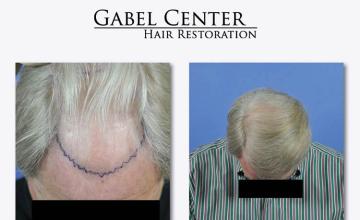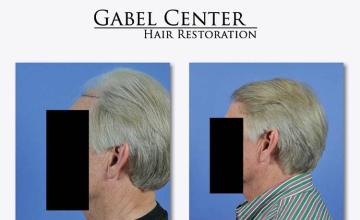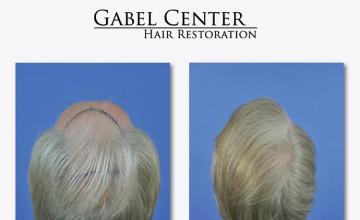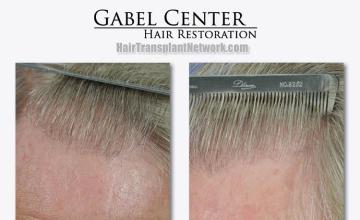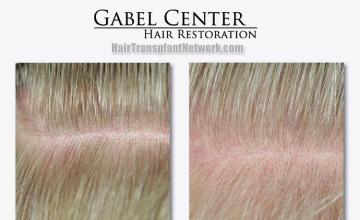Procedure detail
This 58 year old male hair restoration patient was concerned about the progressive alopecia of the frontal area and crown regions of his scalp. He described it as a slow loss over the past 2 decades. He noticed that along with the alopecia, that his hair was gradually thinning as well. When he presented at the clinic, he had significant alopecia of the frontal scalp and some alopecia of the crown. His hair was blond mixed with grey, but very thin. Additionally, the density of his donor hair was on the low side.
We discussed his options in detail. He had been on a regimen of minoxidil and shampoos. Although we discussed the role of Finasteride, he was not interested. In terms of a surgical transplant procedure, we discussed the potential outcomes given his lower density of donor hair and and the fine texture of the hair. On the plus side, his hair color/skin contrast difference would give him a more favorable outcome as they were similar. If his hair would be black, the result would be much thinner; however, since his hair color is blond, it was to his advantage in this situation. Given these facts, he understood that the end result would improve his appearance, but he would always have a thinner look given the characteristics of his donor hair.
The photographs presented are 2 years following surgery which show the transplanted hairs filling the frontal and crown areas very well with the rest of the hair on his scalp. Although the density of his donor hair was low, the 2195 grafts were able to fill in the frontal and crown areas sufficiently to give him a natural, fuller appearance which he ultimately desired.
Bald class

Norwood class 4
Characterized by further frontal hair loss and enlargement of vertex, but there is still a solid band of hair across the top (mid-scalp) separating front and vertex.


